Good Prospects for UK Dairying
None can deny the difficulties that the UK dairy farms have faced over the past 15 years. We can now, though see grounds for cautious optimism for the long-term profitability of our industry.
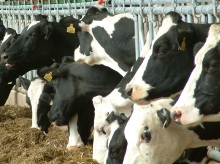 World
market demand for milk should continue to rise and supply and demand is likely to result in firmer but
more volatile prices than we have seen in recent years.
World
market demand for milk should continue to rise and supply and demand is likely to result in firmer but
more volatile prices than we have seen in recent years.
The science is clear dairy products and dairy fats are some of the healthiest foods available. Not only that the latest more refined GWP* calculations show that methane from ruminant livestock does not cause global warming and does nothing to increase either methane nor CO2 in the atmosphere.
The UK dairy industry has made great strides in recent years in developing and marketing a much wider range of added value brands allowing continued developement of high margin products for both the UK market and for export markets.
Raising your game plan to stay ahead of the game
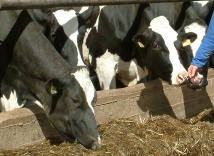 The UK has much lower milk production costs with a larger average
herd size than most
other EU countries other than Denmark and the Netherlands. UK dairy is well able to compete on the World stage.
The UK has much lower milk production costs with a larger average
herd size than most
other EU countries other than Denmark and the Netherlands. UK dairy is well able to compete on the World stage.
This leads me to believe that in all probability, the prospects for UK dairy farming over the next 5 to 20 years are very good. Producing additional marginal litres now, is far more profitable than at any time when EU milk quotas were in force. Interest rates are relatively low so now is a good time to consider updating ageing dairy units.
Within the UK dairy industry there has always been a vast range in profitability between the best and the worst performers. We operate in a mature market, where whilst the top 25% have been able to make money, many have struggled. However no business can afford to stand still. To make good profits in the future you should aim to be a top 25% performer. At least once every year anyone running a business should conduct a business revue. I would urge every dairy farmer to find the time to find the time revue his or her business strategy for the future and to sit down with an experienced dairy nutrition advisor on a regular basis.
Focus on lifting output, not on cutting variable costs
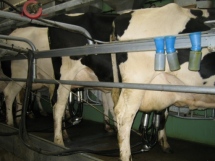 For
most dairy farms the most effective
means of lifting profitability is still to raise milk yield per cow in order to raise output and reduce unit costs of production. If yield per
cow is increased without raising total fixed costs, fixed costs per litre are reduced and
overall profit from the herd can usually be increased without increasing cow numbers.
For
most dairy farms the most effective
means of lifting profitability is still to raise milk yield per cow in order to raise output and reduce unit costs of production. If yield per
cow is increased without raising total fixed costs, fixed costs per litre are reduced and
overall profit from the herd can usually be increased without increasing cow numbers.
Whilst additional capital investment may be justified in order to raise cow numbers or to reduce labour costs, raising milk yields is almost always cost effective and usually achievable without substantial investment.
Variable costs, purchased feed, fertilizer, vet medicine etc. represent only around 40% of the cost of producing a litre of milk. Most dairy farmers have their variable costs firmly under control. Further attempts to reduce variable costs often reduce output by far more than is saved. There is very little scope to reduce variable cost per litre, but plenty of scope to lift output. Even if it means lifting variable cost per litre slightly to do it, focusing on lifting output is the most effective way of increasing profitability on a dairy farm. In other words feeding cows more efficiently and more effectively has considerable scope to increase overall dairy farm profitability.
The key to improved profitability
The
modern Holstein is well capable of producing yields in excess of 9000-10000 litres. The
trick is to provide a total nutrition package capable of not only producing the yield but
also maintaining body condition, compositional quality, fertility and the health of the
cow.
This usually involves attention to detail as well as planning ahead and taking a long term, all encompassing view on feeding involving calf and heifer rearing as well as feeding for the dry period, transition and throughout lactation.
In short raising your game plan in order to stay ahead of the game. Generally speaking, high yielding herds are more profitable. They do not inherently suffer from poor fertility, compromised herd health or high replacement rates; that is down to feeding and management
It is self evident that too much emphasis has been placed on the magic quick fix solution, 'the cake that will make everything right' whilst in reality most nutritional problems are down to longer term issues related to forage quality, feed access and dry matter intake, transition diets and deficiencies in the overall feeding system. These are longer-term issues that cannot be fixed overnight.
Is your nutritionist an integral part of your business?
I believe that the key to raising milk yields, improving herd health and lifting profitability levels on UK dairy farms is to work closely with a competent dairy nutritionist over a period of several years. The important factor is to establish a long term working relationship based on trust and judged by results. Beware of taking bits of advice from several different sources, none of whom have either the time nor the inclination to take a sufficiently in depth look at your diets. Likewise beware of cut-price products, which offer small savings and may impact heavily on both output and bottom line profits.
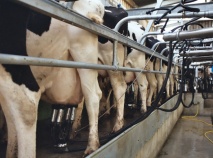 It
is essential to take a comprehensive view of the whole feeding system starting with the
forage. The mix of forages and varieties, harvest dates, type of additive used, design
and layout of clamps and clamp management can all have a dramatic effect on long term herd
performance. It is also essential that the nutrition package be up to the job throughout
the lactation, dry period and transition. Diets that are compromised for even short periods
of time have severe consequences for fertility, herd health, culling rates and future milk
output.
It
is essential to take a comprehensive view of the whole feeding system starting with the
forage. The mix of forages and varieties, harvest dates, type of additive used, design
and layout of clamps and clamp management can all have a dramatic effect on long term herd
performance. It is also essential that the nutrition package be up to the job throughout
the lactation, dry period and transition. Diets that are compromised for even short periods
of time have severe consequences for fertility, herd health, culling rates and future milk
output.
As herd yields rise, concentrate to forage ratios, starch levels and energy density should not be pushed beyond safe levels. Rather we must progress by improving forage quality, and by working with the rumen to maximize both dry matter intake and feed conversion efficiency. Diets should be designed to safeguard health and fertility, to lift dry matter intakes and to produce a flatter more sustainable lactation curve. It's not all about piling more and more into the cow, there are numerous ways that we can improve both energy and protein utilization and actually get more out of the same amount of feed through improved feed efficiency.
There are also clear advantages to adopting an accelerated growth programme, to calve heifers earlier and closer to their mature size. There is a vast array of seeds; bulk feeds, additives and supplements available to dairy farmers. Consequently it is important that your nutritionist has a thorough knowledge of products available, knows what will work and what is cost effective. Your nutrition advisor will need to be capable of designing the most cost effective feeding packages, capable of producing the highest yields, optimum herd health and maximum profitability for you the customer.
Feeding high yielding cows for profit, needs a detailed long term approach, best achieved by working closely with a good nutrition advisor over several years
How can RWN benefit your business?
Our strategy at Richard Webster Nutrition is simple; provide our dairy clients with the means to generate more profit through better nutrition. Since we are not tied to any one supplier or manufacturer, we are truly independent and can focus on the job in hand, how to make money for our customers. This involves spending a lot of time getting the overall nutrition package right.
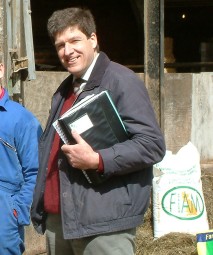 Also
as a business we spend a great deal of time researching, sourcing or developing products
from a range of manufacturers in order to make sure that we have the most effective products
available in the market place.
Also
as a business we spend a great deal of time researching, sourcing or developing products
from a range of manufacturers in order to make sure that we have the most effective products
available in the market place.
Often due to pressure on the farmers time, purchases are made in haste on the basis of a marginal cost saving, but without taking the time and trouble to establish which product really is 'fit for purpose' and without realising that there are much better products available for very little additional cost which will generate a much higher levels of profit.
This is not a case of, 'The pennies looking after the pounds' but rather, 'Penny wise pound foolish'. This is one area where RWN really can help. One of our main roles is in sourcing the right products for our customers.
We are a founder member of the Federation of Independent Merchants (FIAM). Through FIAM we work closely with a number of other independent, nutritionally based feed supply companies, exchanging ideas, evaluating products and negotiating supply terms. This means that we are very competitively priced and more importantly our customers can relax, confident that they have the best products for the job in hand.
The success of RWN's strategy can be measured by the continued year on year increase in the number of farmers who use our services to supply a full nutrition package on an ongoing basis
Our focus is on sourcing the right products to make money for our customers
Summary
Despite all the doom, gloom and despondency that we have seen within the industry in recent years, there are real opportunities for the forward thinking dairy farm business to stay ahead of the game and increase profitability.
Review your business regularly. Focus on increasing output rather than attempting to cut variable costs as a means of lifting profitability
Nutrition is the key to profitable production. Ask yourself, could you get more output from forage? Are your cows reaching their genetic potential? Does your herd suffer from compromised fertility and health issues or high replacement rates due to inadequate nutrition? Do you work closely enough with a dairy nutrition advisor who can help you take your business forward? Are you making full use of the latest state of the art, products and technical knowledge available? Is it time to make changes?
For more information contact Richard Webster
